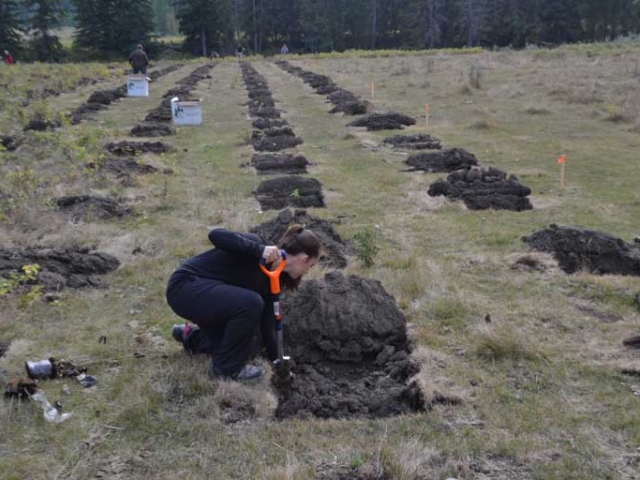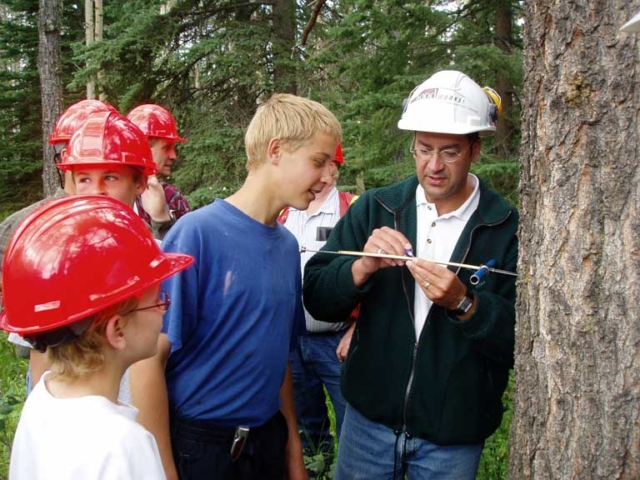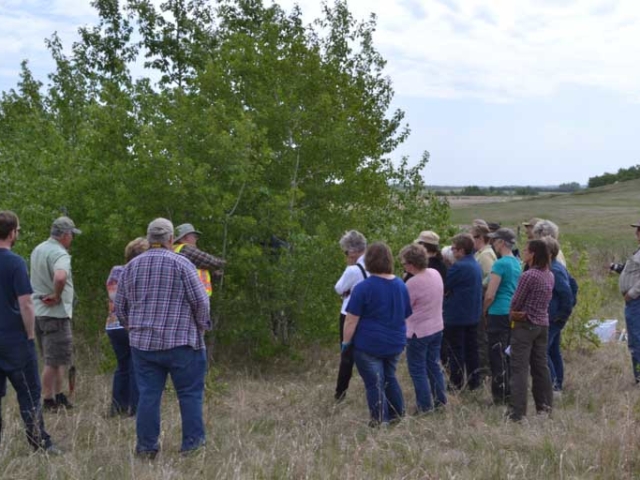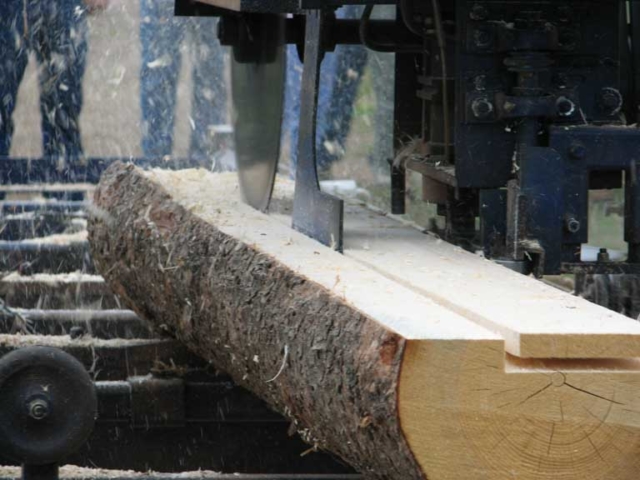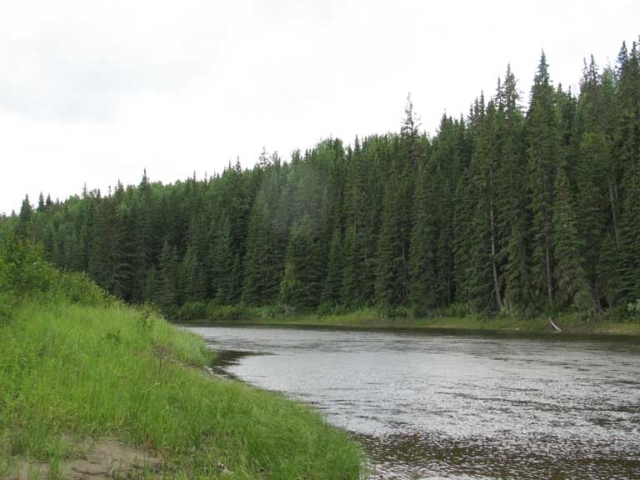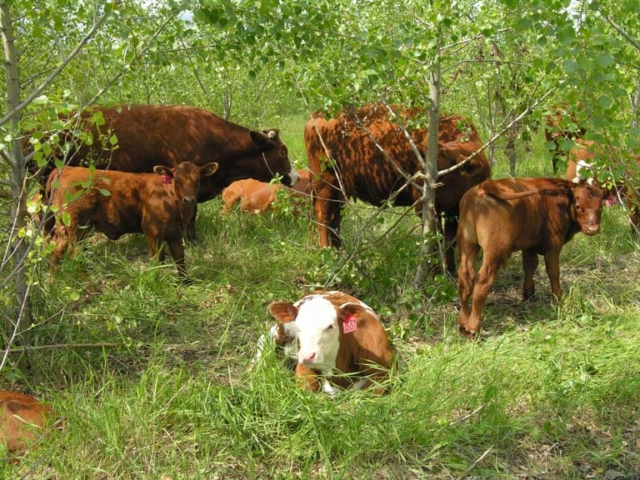Producers have the opportunity to watch shelter belt webinar thanks to Wheatland County’s priority on proper Agriculture cover
https://www.prairiepost.com/agriculture/producers-have-the-opportunity-to-watch-shelter-belt-webinar-thanks-to-wheatland-county-s-priority/article_ba3a0c44-86a6-11eb-9e47-f34263fcbf8f.html

Wheatland County in conjunction with other municipalities such as Mountain View County and County of Newell are sponsoring a Shelterbelt and Ecobuffer Webinar April 8, which will feature the expertise of representatives from the Agroforestry and Woodlot Extension Society.
According to the event description, the webinar will cover site preparation; tree and shrub species selection; tips for planting success; maintenance; managing pests and diseases
Many of the older generation of farmers and rural landowners will remember the storied The Prairie Farm Rehabilitation Administration (PFRA)’s shelter belt program. It allowed those who wanted trees and shrubs to acquire them as part of a way to provide barriers for wind, catch snow for moisture and help stop soil erosion. After budget cuts, the PFRA was terminated in 2009 as an arm of Agriculture and Agri-Food Canada. In 2013, the federal government cut the shelter belt and community pasture programs.
Today, a few provincial municipalities have more of a user pay program and ensure shelter belts are a priority.
Wheatland County, for example has the Shelterbelt And Ecobuffer Seedling Program, which is an example of the county’s interest.
Alyssa Robb, Environmental Coordinator for Wheatland County in Strathmore says while they have this seedling program for its own municipality, they decided that they wanted to share knowledge and see if anyone else wanted in on the event.
“We reached out to some of our neighbours like Kneehill (County), Mountainview (County), MD of Bighorn, and County of Newell to see if they wanted to see if anyone else wanted to extend it to their ratepayers as well,” explains Robb. “So what we ended up doing was splitting the cost of Agroforestry and Woodlot Extension Society’s time and then they come do this for us in a webinar to accommodate Covid constraints.
“This year due to Covid we needed to consider a different avenue. We still wanted to provide information to rate payers so their planting projects have a better chance of success.”
Last year, in February prior to pandemic restrictions, they had an in-person shelter belt and eco-buffer workshop, that was a partnership with AWES (Agroforestry and Woodlot Extension Society) as well. It was in-person in Strathmore and 80 showed up of the 100 who registered. An Alberta Agriculture and Forestry horticultural specialist presented.
Robb says organizers there’s not really a registration target.
They’re just ensuring that anyone who wants access to this information or can benefit from it, has it available to them. They saw webinars in the Peace region and around Edmonton and so they wanted to create one more for southern planting. However Robb points out they have different challenges like weather patterns, different soils, and water availability than the north does. So those differences made organizers want AWES to deal directly with that.
Shelterbelts are well known but ecobuffering is becoming popular.
“My understanding of it is that an ecobuffer is a non-traditional type of planting. Traditionally on a farm you plant in perfect rows, usually a three row shelter belt would be ideal for wind control,” explains Robb. “Ecobuffers are a different take on shelter belts. The objectives are different. You are going from planting a row (with shelterbelts) to hoping the planting will take off and create a more of an ecological space. People will focus on pollinator species or edible species like berries, maybe they are not always human edible but sometimes they are wildlife type food source, they choose. The intent is that over time, that looks less like a line and more of a kinda bunch, kinda of an ecological patch. They serve a lot of similar purposes as a shelterbelt. One is done properly (more strictly organized), while ecobuffers… they are just a different take on a shelterbelt that has more of an ecological goal in mind.”
There was a big push in the PFRA days to have shelterbelts still on the landscape. From Robb’s understanding and what I have heard over time that the program ran its course and there wasn’t a need for it anymore. The funding went away so, when Wheatland County officials were developing its seedling program they were being asked a lot about doing one from ratepayers.
“A lot of people remembered the PFRA days and they are thinking to themselves ‘I want to plant some trees’ and hoping there was some program available and there just wasn’t,” explains Robb. “So we felt the need come from that, the loss of PFRA and over time, there was a consistent demand for that kind of support. We’re definitely not the first municipality to have a program, (MD of Taber and northern Alberta municipalities).”
The Shelterbelt and Ecobuffer Seedling Program is priority for Wheatland County. In plain terms, there is a 75% coverage up to $2.50/plant. Total of $1000 for purchase of tree and shrub seedlings. In addition, there is 25% covered up to $500 for drip irrigation and wood or plastic mulch.
With it, applicants may receive a funding maximum of $1,500 in a three-year period through this program. Wheatland County will pay 75% to a maximum of $2.50 per plant purchased, for a total of $1,000 for seedlings, and 25% to a maximum of $500 for drip irrigation or mulch materials. GST and shipping costs are not eligible for funding. Planting must occur on land within Wheatland County. Wheatland County ratepayers are eligible for funding for personal, residential or farm use. Commercial or industrial businesses are not eligible for funding. Plants or materials purchased through the program may not be used for commercial resale. Applications will be approved by the Wheatland County Agriculture and Environment department.
Wheatland County notes those interested in shelterbelts and ecobuffers may be able to get additional funding through the Canadian Agricultural Partnership (CAP) and Alternative Land Use Services (ALUS) programs for projects on agricultural land.
The Shelterbelt and Ecobuffer Webinar starts at 7 p.m. April 8. To register or for more information on the webinar can call 403-361-2166 or email gay.mowat@wheatlandcounty.ca.

